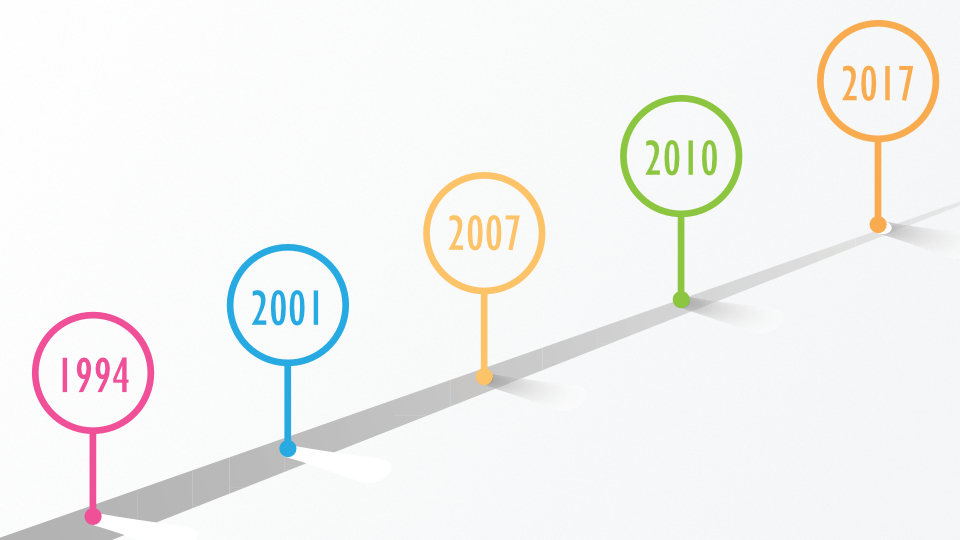There are some signs that the disastrous zero-tolerance policies hatched in the 90s are beginning to lose popularity among lower education administrations. These policies are a key element in the phenomenon called the “school to prison pipeline,” the tendency of schools to funnel students toward prison instead of success.
Schools across the country are rethinking “zero tolerance” discipline policies under which children have been suspended, even arrested, for minor offenses like cursing, getting into shoving matches and other garden-variety misbehavior that in years past would have been resolved with detention or meetings with a child’s parents.
Not arresting students for a simple shove or stealing someone’s books, and instead talking with their parents, would normally be seen as common sense to most people outside of academia. I can’t think of any time when such things were popular in the broader culture. It really is the case that the academic environment is a different world entirely.
The important thing to remember is that suspending and arresting students over trivial matters doesn’t just create a physical distance between such students and the school community that may hamper their ability to learn, but more importantly a psychological distance that – unlike homework – is a lot harder to make up.
Students treated in this manner begin to accept that maybe they really are outsiders, that maybe the straight-laced life just isn’t for them. If others are expelled along with them, they develop a camaraderie over a shared lifestyle, the same kind that is seen when some young men meet up in detention. Like prison inmates meeting for the first time, they nod toward each other and say “So what are you in for?”
More from the New York Times:
Studies have shown that suspensions and expulsions do nothing to improve the school climate, while increasing the risk that children will experience long-term social and academic problems. Federal data also indicates that minority students are disproportionately singled out for harsh disciplinary measures.
Oh and by the way, boys are disproportionately singled out as well. According to NCES data they are twice as likely to be suspended and three times as likely to be expelled as girls.
Although this seems obvious, we don’t normally hear about it when people talk about inequities in zero-tolerance policies. This reason for this is that the conversation concerning the school-to-prison pipeline has been dominated by people who, quite frankly, believe that values like diversity and equity mean only paying attention to boys when they become part of some other group that actually are worthy of attention (gays, blacks, and so forth).
The article continues:
The scope of the problem became clear three years ago when the Council of State Governments Justice Center, a nonprofit policy group, issued a study of school discipline polices in Texas. It showed that nearly 6 in 10 public school students were suspended or expelled at least once between seventh and 12th grade. But only a tiny fraction of the disciplinary actions taken against students were for serious criminal conduct requiring suspension or expulsion under state law.
Let’s think about those numbers for a minute. Given that boys are twice as likely to be suspended and three times as likely to be expelled, how many of boys were punished in this manner if 60% of students on average – an average of both boys and girls – were punished?
I’d say an obscenely high amount.
More from my home state:
The Texas Legislature has taken steps aimed at keeping minor misconduct cases from reaching the courts. One law recommends that school districts consider less harsh sanctions, like a warning letter or counseling. Another measure prohibits police from ticketing and fining children under the age of 12 on school grounds or on a school bus.
A brief note on Texas/education politics:
Although Texas is known for its law and order brand of conservatism (which is a significant contributor to the police state and the phenomenon of mass incarceration), it also has a fairly libertarian streak that is skeptical of big government.
Texas has also been cutting back on the power of schools over the past several years in various ways. Two years ago it did this in the form of massive funding cuts that initiated a wave of hiring freezes, pay freezes (in terms of raises), job fair cancellations, and retirement incentives. Keller ISD even cancelled their bus services. It was a very bleak time to be looking for a job as a teacher in lower ed in Texas. I should know, because that was me after I quit working at A&M-Commerce.
So I’m glad to see that this time, their “cuts” actually make sense.
The New York Times tells us of these changes in California and Florida:
A similar evolution is taking place in California. The Los Angeles school district became the first in the nation to ban suspensions for “willful defiance,” a catchall category that accounted for more than 40 percent of the state’s suspensions in the 2011-12 school year. A new state law allows suspension for serious offenses, like those involving violence or weapons, but requires schools to try alternative strategies, including parent-teacher conferences, before suspending students for nonviolent infractions.
Change is also afoot in Broward County, Fla., one of the nation’s largest school districts. The district has entered into an agreement with civil rights groups and law enforcement to keep troubled children in school, where they can receive counseling and other forms of help. Broward’s superintendent said it was wrong to keep saddling students with criminal records that can hurt their chances of getting a job or college financial aid, or of entering the military. School systems across the country should pay attention.
So yes, there are some hopeful signs that institutional support for the zero-tolerance/zero-common sense policies are beginning to crack. I’m not sure it warrants the type of characterization made at the beginning of the NYT article that it is happening “across the country,” as if moving away from such polices is becoming a widespread pattern in lower ed.
But there is hope. And that’s why these changes are good news.
Huffinton Post Education (not to be confused with its more anti-male neighbor Huffington Post College) has also written an excellent article on the matter. I won’t quote from it at length, but here’s something it covers that the NYT article doesn’t:
The idea behind zero-tolerance policies is to remove disruptive students from classrooms in order to make schools safer, but research shows no correlation between expulsions and safety, the report says. While zero-tolerance policies originally were intended to protect against extreme situations, like when students bring weapons to school, the policies in practice often punish students for significantly lesser offenses.
It’s time to end the madness of zero-tolerance policies. Let’s also remember something many education administrators and policy makers have forgotten over the past 20 years: kids are kids. They need firm boundaries, but they also need room to grow.
Thank You for Reading
If you like what you have read, feel free to sign up for our newsletter here:
About the Author
Related Posts
One Comment
Comments are closed.
There are some signs that the disastrous zero-tolerance policies hatched in the 90s are beginning to lose popularity among lower education administrations. These policies are a key element in the phenomenon called the “school to prison pipeline,” the tendency of schools to funnel students toward prison instead of success.
Schools across the country are rethinking “zero tolerance” discipline policies under which children have been suspended, even arrested, for minor offenses like cursing, getting into shoving matches and other garden-variety misbehavior that in years past would have been resolved with detention or meetings with a child’s parents.
Not arresting students for a simple shove or stealing someone’s books, and instead talking with their parents, would normally be seen as common sense to most people outside of academia. I can’t think of any time when such things were popular in the broader culture. It really is the case that the academic environment is a different world entirely.
The important thing to remember is that suspending and arresting students over trivial matters doesn’t just create a physical distance between such students and the school community that may hamper their ability to learn, but more importantly a psychological distance that – unlike homework – is a lot harder to make up.
Students treated in this manner begin to accept that maybe they really are outsiders, that maybe the straight-laced life just isn’t for them. If others are expelled along with them, they develop a camaraderie over a shared lifestyle, the same kind that is seen when some young men meet up in detention. Like prison inmates meeting for the first time, they nod toward each other and say “So what are you in for?”
More from the New York Times:
Studies have shown that suspensions and expulsions do nothing to improve the school climate, while increasing the risk that children will experience long-term social and academic problems. Federal data also indicates that minority students are disproportionately singled out for harsh disciplinary measures.
Oh and by the way, boys are disproportionately singled out as well. According to NCES data they are twice as likely to be suspended and three times as likely to be expelled as girls.
Although this seems obvious, we don’t normally hear about it when people talk about inequities in zero-tolerance policies. This reason for this is that the conversation concerning the school-to-prison pipeline has been dominated by people who, quite frankly, believe that values like diversity and equity mean only paying attention to boys when they become part of some other group that actually are worthy of attention (gays, blacks, and so forth).
The article continues:
The scope of the problem became clear three years ago when the Council of State Governments Justice Center, a nonprofit policy group, issued a study of school discipline polices in Texas. It showed that nearly 6 in 10 public school students were suspended or expelled at least once between seventh and 12th grade. But only a tiny fraction of the disciplinary actions taken against students were for serious criminal conduct requiring suspension or expulsion under state law.
Let’s think about those numbers for a minute. Given that boys are twice as likely to be suspended and three times as likely to be expelled, how many of boys were punished in this manner if 60% of students on average – an average of both boys and girls – were punished?
I’d say an obscenely high amount.
More from my home state:
The Texas Legislature has taken steps aimed at keeping minor misconduct cases from reaching the courts. One law recommends that school districts consider less harsh sanctions, like a warning letter or counseling. Another measure prohibits police from ticketing and fining children under the age of 12 on school grounds or on a school bus.
A brief note on Texas/education politics:
Although Texas is known for its law and order brand of conservatism (which is a significant contributor to the police state and the phenomenon of mass incarceration), it also has a fairly libertarian streak that is skeptical of big government.
Texas has also been cutting back on the power of schools over the past several years in various ways. Two years ago it did this in the form of massive funding cuts that initiated a wave of hiring freezes, pay freezes (in terms of raises), job fair cancellations, and retirement incentives. Keller ISD even cancelled their bus services. It was a very bleak time to be looking for a job as a teacher in lower ed in Texas. I should know, because that was me after I quit working at A&M-Commerce.
So I’m glad to see that this time, their “cuts” actually make sense.
The New York Times tells us of these changes in California and Florida:
A similar evolution is taking place in California. The Los Angeles school district became the first in the nation to ban suspensions for “willful defiance,” a catchall category that accounted for more than 40 percent of the state’s suspensions in the 2011-12 school year. A new state law allows suspension for serious offenses, like those involving violence or weapons, but requires schools to try alternative strategies, including parent-teacher conferences, before suspending students for nonviolent infractions.
Change is also afoot in Broward County, Fla., one of the nation’s largest school districts. The district has entered into an agreement with civil rights groups and law enforcement to keep troubled children in school, where they can receive counseling and other forms of help. Broward’s superintendent said it was wrong to keep saddling students with criminal records that can hurt their chances of getting a job or college financial aid, or of entering the military. School systems across the country should pay attention.
So yes, there are some hopeful signs that institutional support for the zero-tolerance/zero-common sense policies are beginning to crack. I’m not sure it warrants the type of characterization made at the beginning of the NYT article that it is happening “across the country,” as if moving away from such polices is becoming a widespread pattern in lower ed.
But there is hope. And that’s why these changes are good news.
Huffinton Post Education (not to be confused with its more anti-male neighbor Huffington Post College) has also written an excellent article on the matter. I won’t quote from it at length, but here’s something it covers that the NYT article doesn’t:
The idea behind zero-tolerance policies is to remove disruptive students from classrooms in order to make schools safer, but research shows no correlation between expulsions and safety, the report says. While zero-tolerance policies originally were intended to protect against extreme situations, like when students bring weapons to school, the policies in practice often punish students for significantly lesser offenses.
It’s time to end the madness of zero-tolerance policies. Let’s also remember something many education administrators and policy makers have forgotten over the past 20 years: kids are kids. They need firm boundaries, but they also need room to grow.
Thank You for Reading
If you like what you have read, feel free to sign up for our newsletter here:
About the Author
Related Posts
One Comment
-
All the perverse “Alliances” that are manufacturing the statistics US gender-feminists are using to “Inflame” their way to Empowerment, need to get their federal pork bloating dollars cut. All these federal pork bloated US bureaucrats do not fully understand that they can only terrorize young boys for so long, until the boys father decides he’s had enough.
Comments are closed.
More from Title IX for All
Accused Students Database
Research due process and similar lawsuits by students accused of Title IX violations (sexual assault, harassment, dating violence, stalking, etc.) in higher education.
OCR Resolutions Database
Research resolved Title IX investigations of K-12 and postsecondary institutions by the Department of Education’s Office for Civil Rights (OCR).
Attorneys Directory
A basic directory for looking up Title IX attorneys, most of whom have represented parties in litigation by accused students.







All the perverse “Alliances” that are manufacturing the statistics US gender-feminists are using to “Inflame” their way to Empowerment, need to get their federal pork bloating dollars cut. All these federal pork bloated US bureaucrats do not fully understand that they can only terrorize young boys for so long, until the boys father decides he’s had enough.